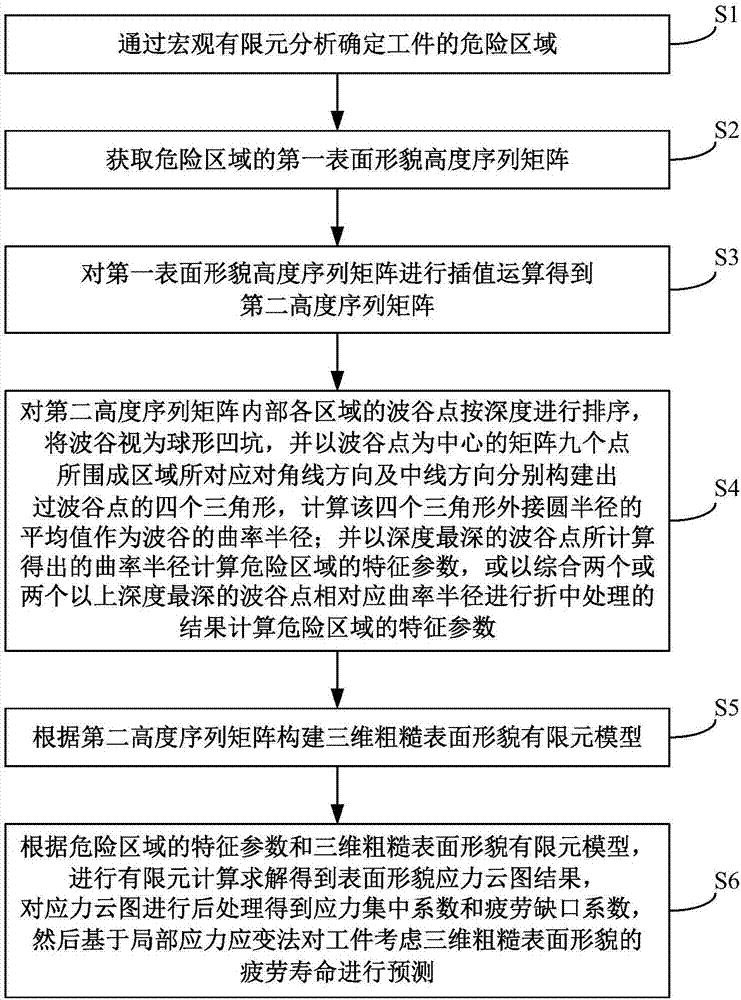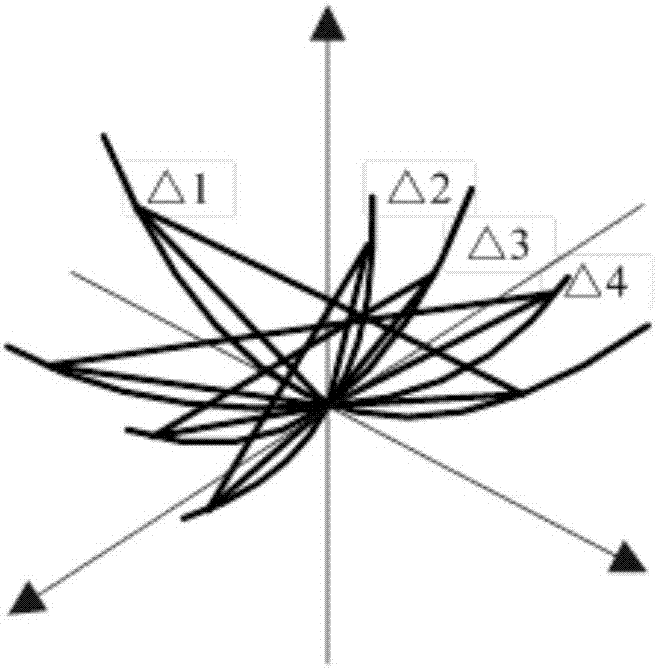Workpiece fatigue life prediction method and system considering three-dimensional rough surface topography
A fatigue life prediction, rough surface technology, applied in image data processing, special data processing applications, instruments, etc., can solve the problem that the simplified model cannot reflect the surface topography characteristics, affect the accuracy of the prediction results, etc., to improve the accuracy and Accurate, easy to calculate, based on sound scientific effects
- Summary
- Abstract
- Description
- Claims
- Application Information
AI Technical Summary
Problems solved by technology
Method used
Image
Examples
Embodiment 1
[0027] This embodiment discloses a method for predicting the fatigue life of a workpiece considering the three-dimensional rough surface topography, such as figure 1 shown, including:
[0028] Step S1, determining the dangerous area of the workpiece through macroscopic finite element analysis.
[0029] Step S2, obtaining the first surface topography height sequence matrix of the dangerous area.
[0030] In this step, a white light interferometer can be used to obtain the first surface topography height sequence matrix, and the obtained first surface topography height sequence matrix is recorded as: z(m, n), where m and n are respectively the horizontal plane X , the number of distribution points in the Y axis.
[0031] Step S3, performing an interpolation operation on the first surface topography height sequence matrix to obtain a second height sequence matrix.
[0032] Optionally, this step adopts Bezier Curve interpolation. After the difference of the first surface t...
Embodiment 2
[0086] Corresponding to the above method embodiments, this embodiment discloses a fatigue life prediction system that considers the three-dimensional rough surface topography of a workpiece, including:
[0087] The first processing module is used to determine the dangerous area of the workpiece through macroscopic finite element analysis;
[0088] The second processing module is used to obtain the first surface topography height sequence matrix of the dangerous area;
[0089] The third processing module is used to perform an interpolation operation on the first surface topography height sequence matrix to obtain a second height sequence matrix;
[0090] The fourth processing module is used to sort the trough points in each area inside the second height sequence matrix according to the depth, regard the trough as a spherical pit, and use the matrix z(i-1 : i+1, j-1: j+1) The diagonal direction and the midline direction of the area enclosed by the nine points respectively con...
PUM
 Login to View More
Login to View More Abstract
Description
Claims
Application Information
 Login to View More
Login to View More - R&D
- Intellectual Property
- Life Sciences
- Materials
- Tech Scout
- Unparalleled Data Quality
- Higher Quality Content
- 60% Fewer Hallucinations
Browse by: Latest US Patents, China's latest patents, Technical Efficacy Thesaurus, Application Domain, Technology Topic, Popular Technical Reports.
© 2025 PatSnap. All rights reserved.Legal|Privacy policy|Modern Slavery Act Transparency Statement|Sitemap|About US| Contact US: help@patsnap.com



